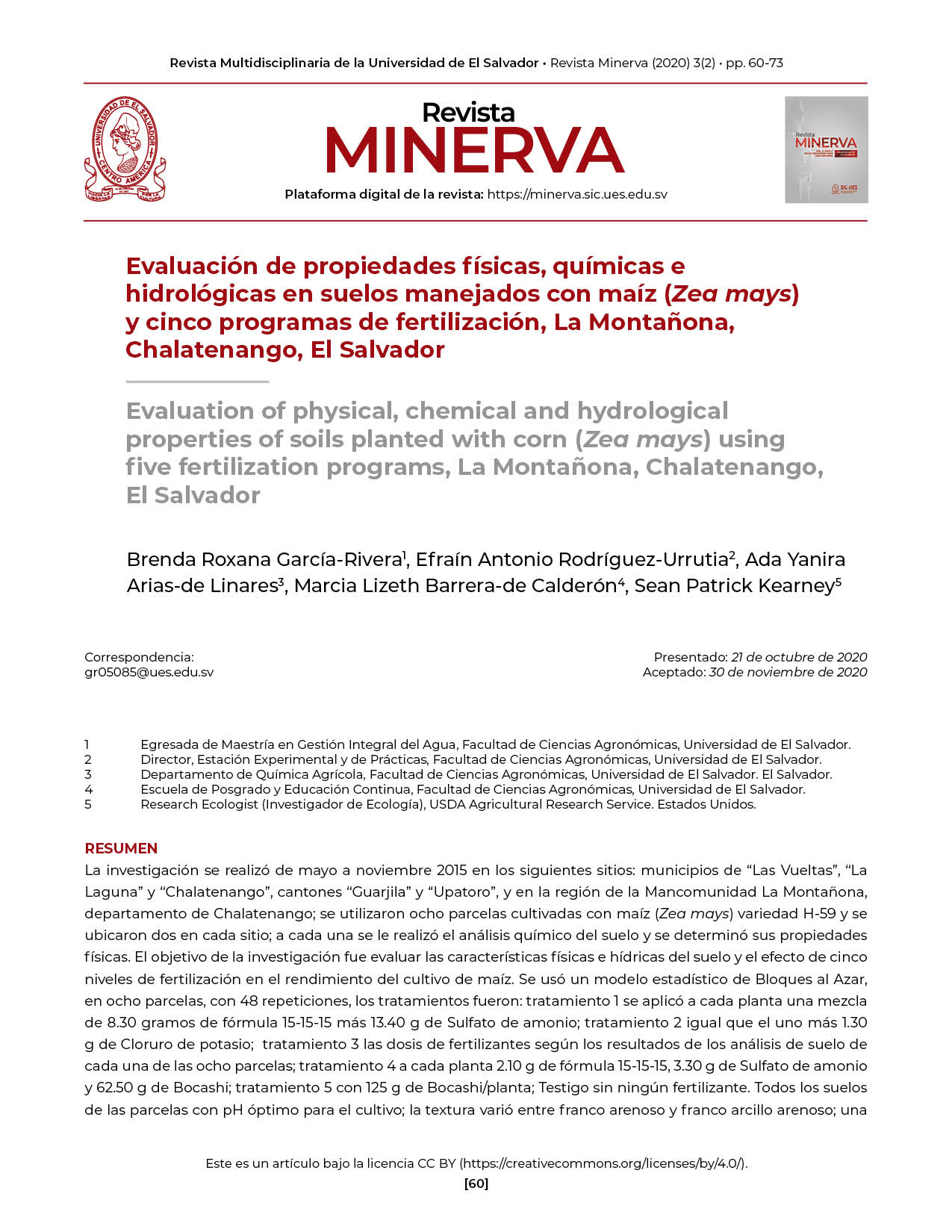Abstract
The research was conducted in the municipalities of Las Vueltas, La Laguna and Chalatenango (Guarjila and Upatoro cantons), in the region of La Montañona Commonwealth, in the department of Chalatenango, during the period from May to November 2015, within the working area of the Canada-Latin America and The Caribbean Research Exchange Grants (LAGREG) project, in eight plots cultivated with corn (Zea mays) variety H-59. Two plots were located at each site: Las Vueltas, Guarjila, Upatoro and La Laguna. Chemical analyses of the soil and its physical properties were carried out in each plot. The objective of the research was to evaluate the physical and water characteristics of the soil and the effect of five levels of fertilization on the yield of the corn crop. A statistical model of Random Blocks was used, in eight plots, with 48 repetitions, the treatments were: Treatment 1 a mixture of 8.30 grams of formula 15-15-15 plus 13.40 g of Ammonium Sulfate ; in treatment 2 the same was applied to each plant as treatment 1 plus 1.30 g of potassium chloride; In treatment 3, the doses of fertilizers were applied according to the results of the soil analyzes of each of the eight plots; In treatment 4, 2.10 g of formula 15-15-15, 3.30 g of Ammonium Sulfate and 62.50 g of Bocashi were applied to each plant; in treatment 5, 125 g of Bocashi was applied to each plant; and a control plot in which no fertilizer was applied. All the soils of the plots where the research was carried out present an optimal pH for cultivation; the texture varied between sandy loam and sandy clay loam; a density between 1.19 g/cm3 to 1.57 g/cm3. The highest maize production was obtained with treatment 4 that yielded 42.92 qq/mz (2,786.54 kg/ha) and the lowest production was with treatment 5 with 34.10 qq/mz (2,213.87 kg/ha). During the investigation, a drought was observed as part of the El Niño phenomenon.

This work is licensed under a Creative Commons Attribution 4.0 International License.
Copyright (c) 2020 Authors who publish in Revista Minerva agree to the following terms: Authors continue as owners of their work, assigning only dissemination rights to Minerva Magazine under the standards of the Creative Commons Attribution 4.0 International License (CC BY 4.0). This license allows others to mix, adapt and build upon the work for any purpose, including commercially, and although new works must also acknowledge the initial author, they do not have to license derivative works under the same terms.




